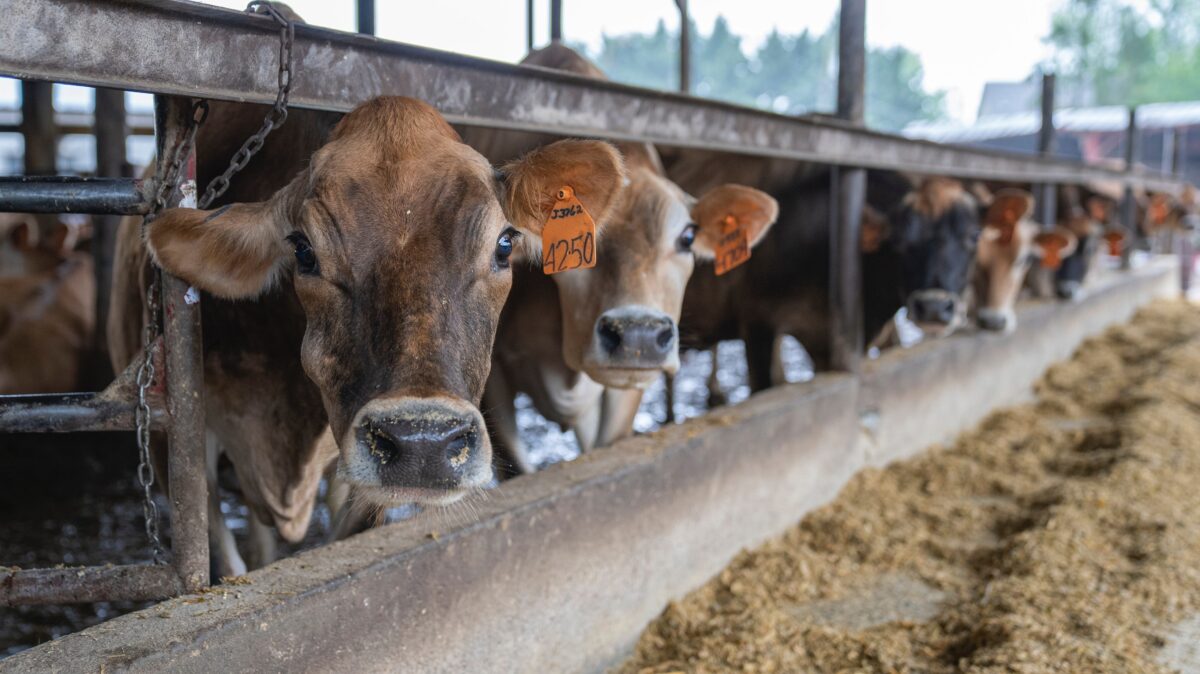Dairy MPP Is Delivering in 2018
TOPICS
Trade
photo credit: Mark Stebnicki, North Carolina Farm Bureau
John Newton, Ph.D.
Chief Economist
$155 Million in Program Payments Through May
Driven by improvements made by Congress in the Bipartisan Budget Act of 2018 and USDA’s efforts to inform dairy farmers about the enhanced program, as of early July more than 21,000 dairy farm operations had enrolled in the Dairy Margin Protection Program for the 2018 coverage year. More are still putting the final touches on their enrollment applications. Once final enrollment is tallied, more than 50 percent of the licensed dairy operations in the U.S. will be participating. These farmers purchased MPP coverage on 131 billion pounds of milk, representing approximately 60 percent of the U.S. milk supply.
The total number of dairy farms enrolled in MPP for 2018 was up nearly 1,000 farms, or 5 percent, from 2017 enrollment levels. However, while farm enrollment was up over prior-year levels, the amount of covered milk was down 14 billion pounds. The decline in covered milk is likely due to farmers opting to purchase protection as close to 5 million pounds as possible – the average volume of covered milk per farm is slightly higher than 6 million pounds. More important than enrollment levels, however, is how farmers are using the program to protect against the risk of margin declines.
In 2016 and 2017, fewer than 25 percent of participating dairy operations elected buy-up coverage above the catastrophic $4 per hundredweight coverage level. This year, 95 percent of the enrolled dairy operations elected buy-up coverage and many of those farms elected the highest coverage level -- $8 per hundredweight. USDA’s flexibility in allowing farmers to finalize coverage options until June 22 contributed to the upturn in buy-up coverage participation. Figure 1 highlights historical MPP enrollment and buy-up participation rates.

How Has MPP Performed?
Following the enhancements to MPP, USDA made the coverage retroactive to January 2018 for farmers electing to participate. As highlighted in a recent Market Intel, For Some, New MPP Makes Plenty of Cents, MPP triggered payments at the $7 through $8 coverage levels from February through May. As of early July, USDA has made over $155 million in program payments to dairy operations participating in MPP during 2018. The average payment rate through May was $7,400 per dairy operation, or 29 cents per hundredweight.
At the state level, Wisconsin dairy farmers have received $37 million and farmers in the Northeast have received more than $30 million, Figure 2. To receive these and future benefits, dairy farmers across the U.S. paid more than $65 million in premiums and administrative fees – resulting in a current net benefit of more than $91.5 million. This total will get larger as MPP is certain to be triggered in the coming months due to trade-related price declines.

More Help is on the Way
Currently, USDA’s online MPP decision tool projects for margins to remain below $8 per hundredweight through September, meaning dairy farmers should expect to continue receiving program payments for the next few months. While the MPP payments will not make a dairy farmer whole, it does help to offset recent milk price and margin declines experienced in the market.
For example, July Class III milk futures, a function of wholesale cheese prices, have fallen by 14 percent, or $2.30 per hundredweight, since the beginning of June. Because of these price declines, the projected MPP margin for July declined by more than $1.40 per hundredweight. The price decline comes despite strong dairy product exports, tighter American cheese stocks and slower than anticipated growth in U.S. milk production but coincides with increased trade uncertainty related to Chinese and Mexican tariffs on U.S. dairy products.

Even More Help is On the Way
Not only will MPP continue to make payments in the coming months, but both the House and Senate farm bills include further improvements to the recently enhanced MPP. The conferenced version of MPP is certain to be an improvement over the original program design. Thus, passing a farm bill on-time is critical to ensure the additional MPP enhancements are in place before the 2019 sign-up.
In addition to the farm bill changes in the dairy title, the Farm Bureau-developed Dairy Revenue Protection insurance product is expected to be available in the coming months, providing dairy farmers another tool in the risk management toolbox. Combined, the enhanced MPP, Dairy Revenue Protection and other risk management tools will provide a much more robust set of risk management tools for dairy farmers going forward.
In addition to these new and retooled dairy safety net programs, USDA also recently announced plans to provide $12 billion in assistance to farmers impacted by trade disruptions. The three-part plan includes a Market Facilitation Program to assist producers through payments to address the impact of tariffs, a Food Purchase and Distribution Program to buy and distribute perishable commodities and a Trade Promotion Program to aid producers in finding new markets for U.S. agricultural exports. The $12 billion package of agricultural assistance announced by the administration will provide temporary relief to dairy farmers who are on the front lines of recent trade disputes.
Combining all of the instruments, even more help is on the way for the dairy industry.